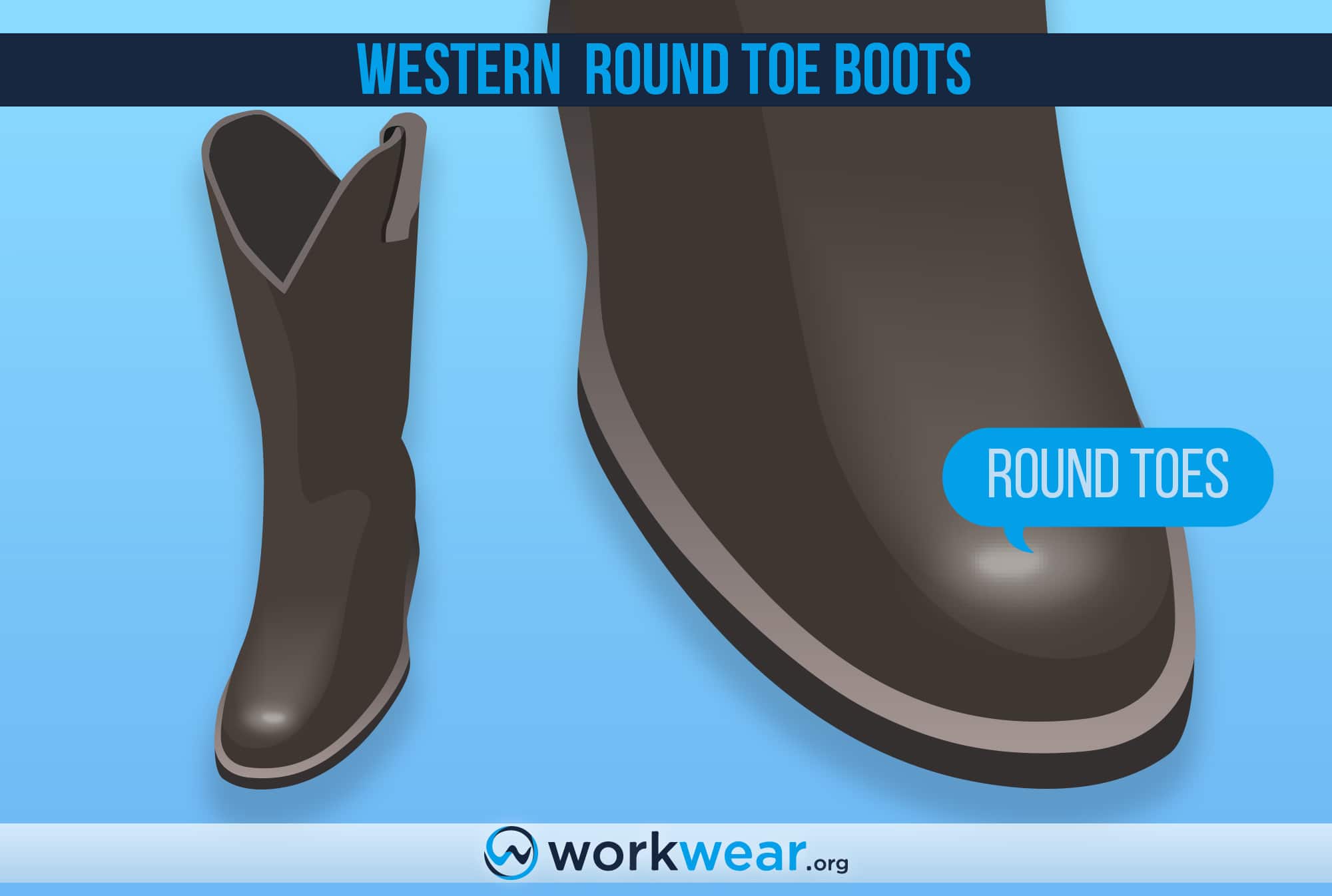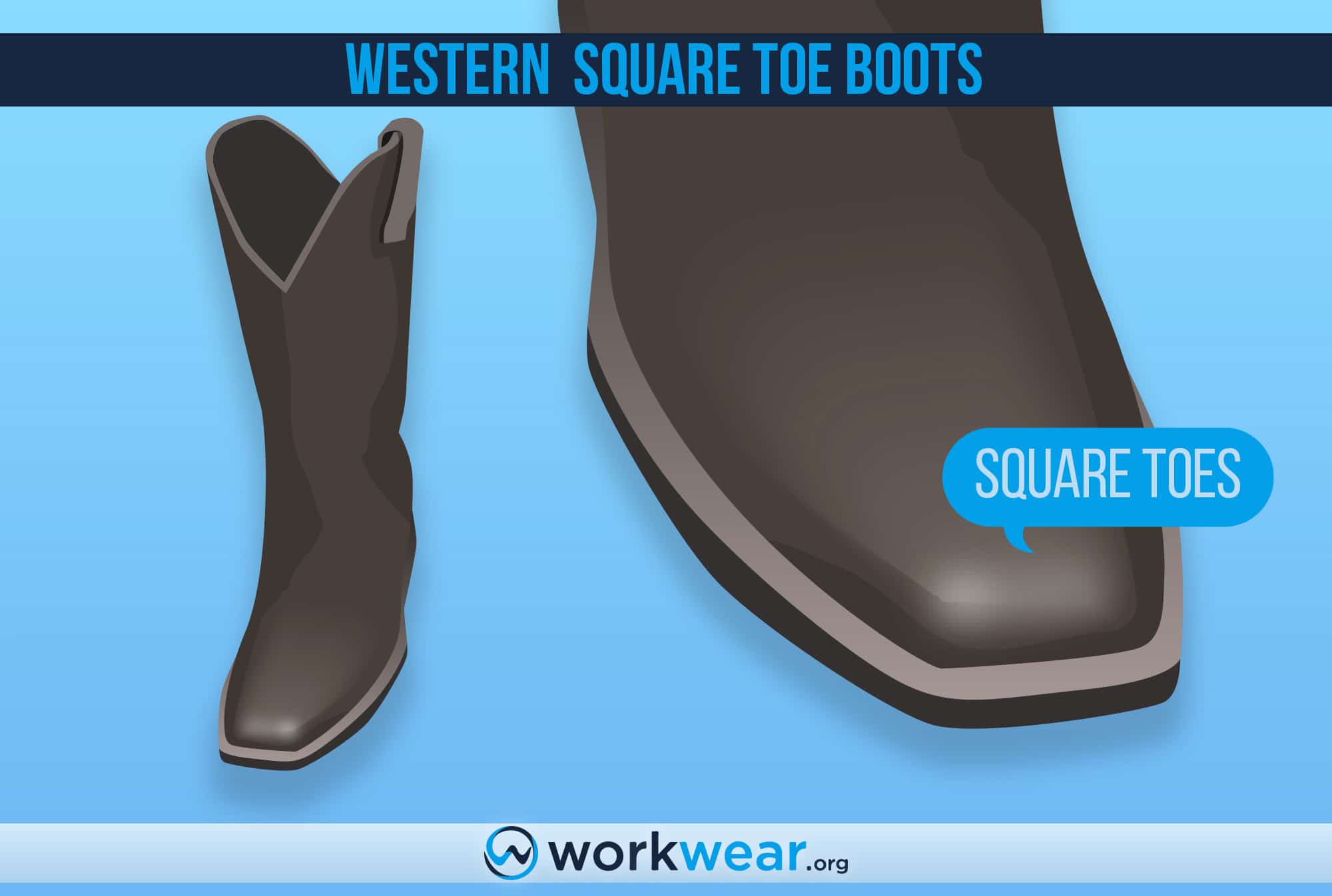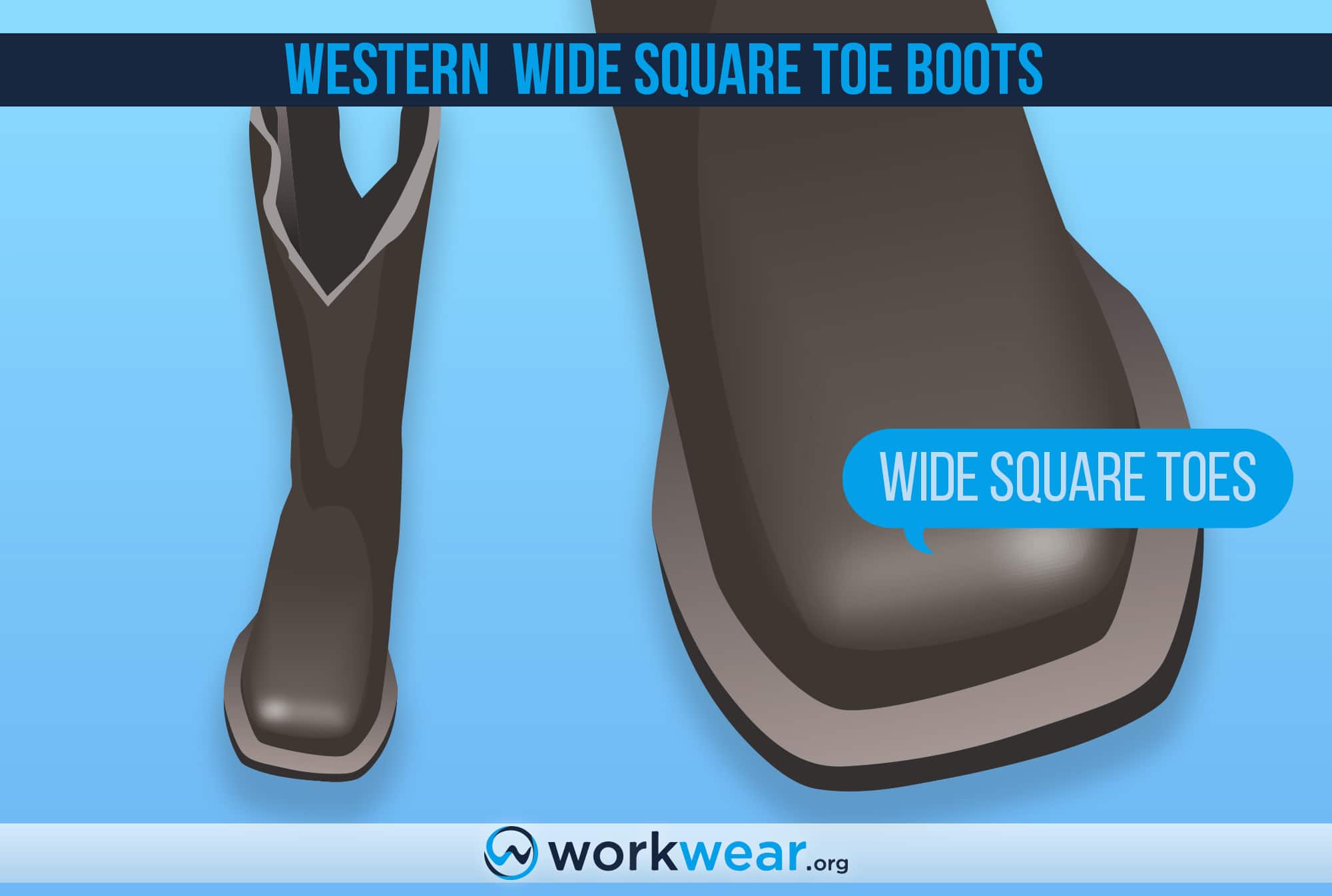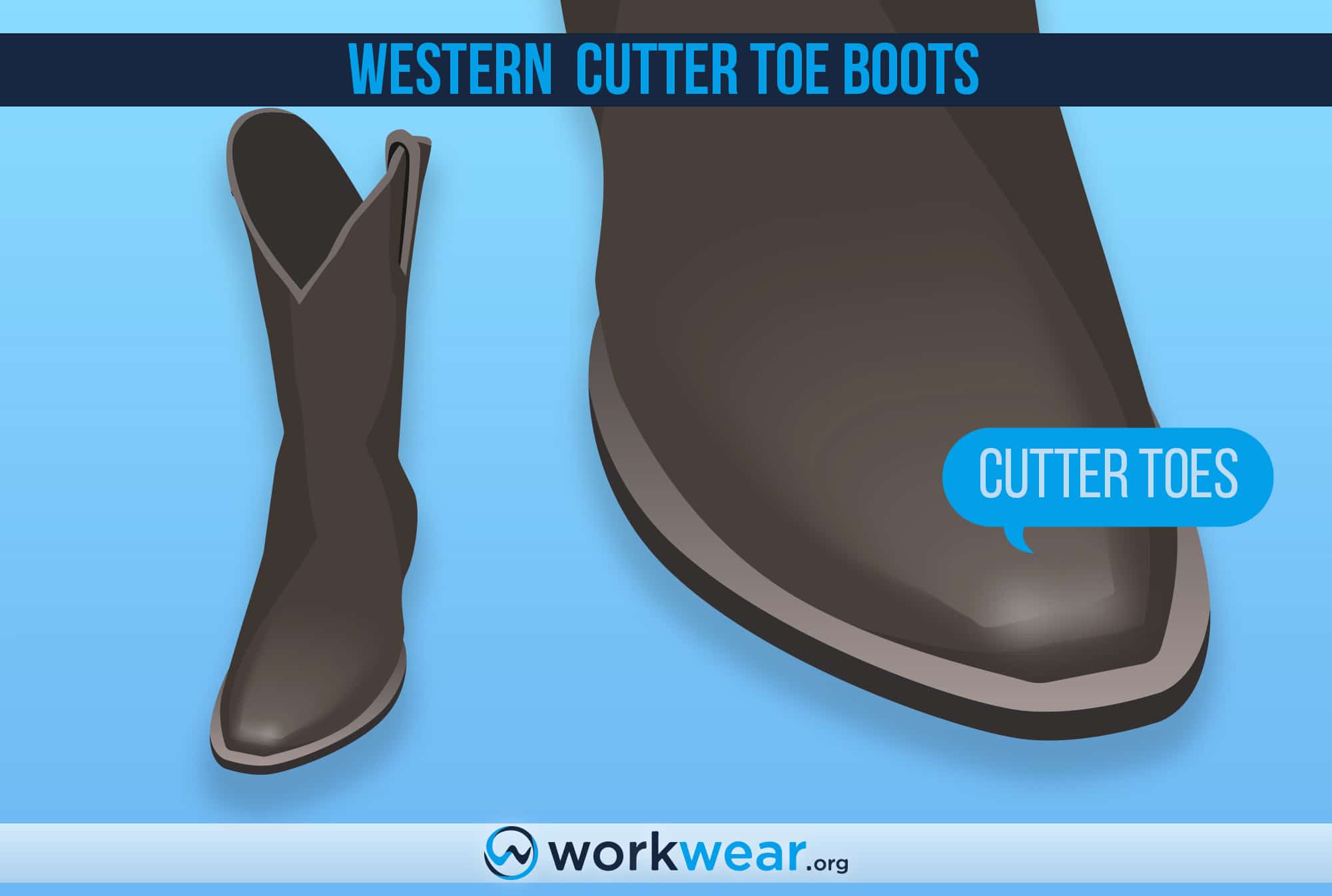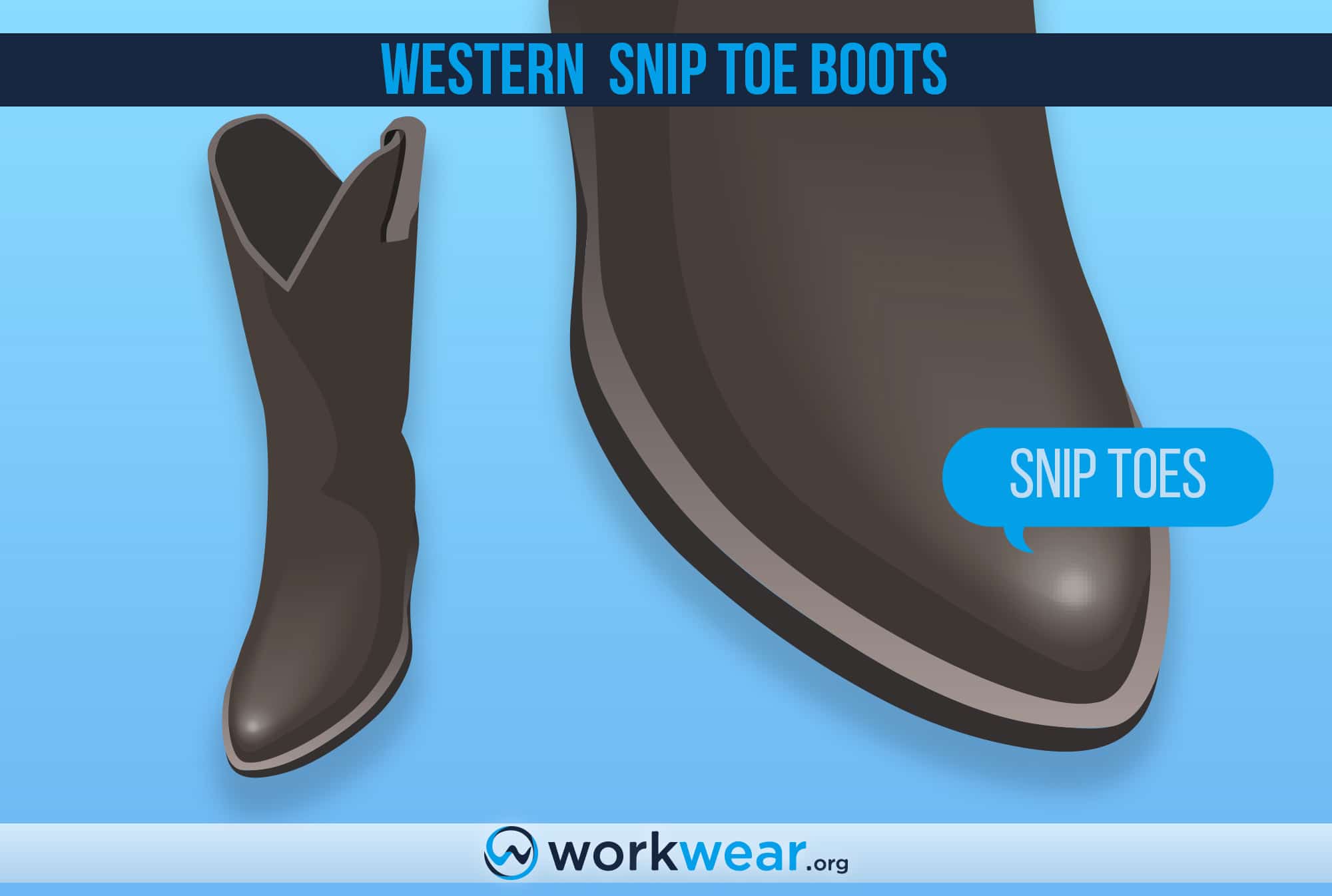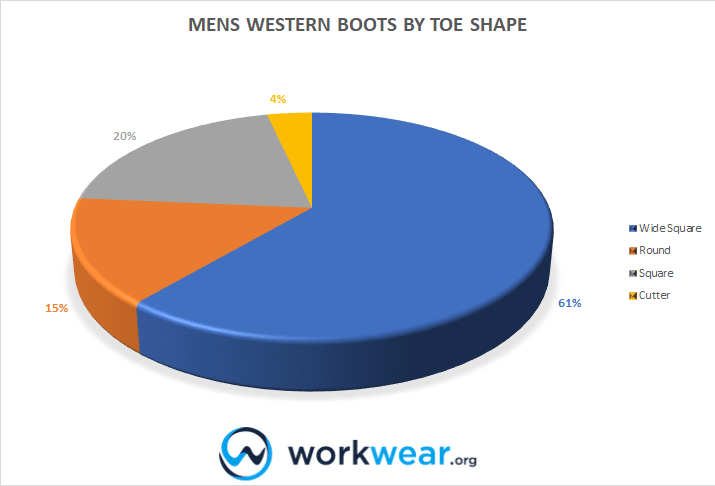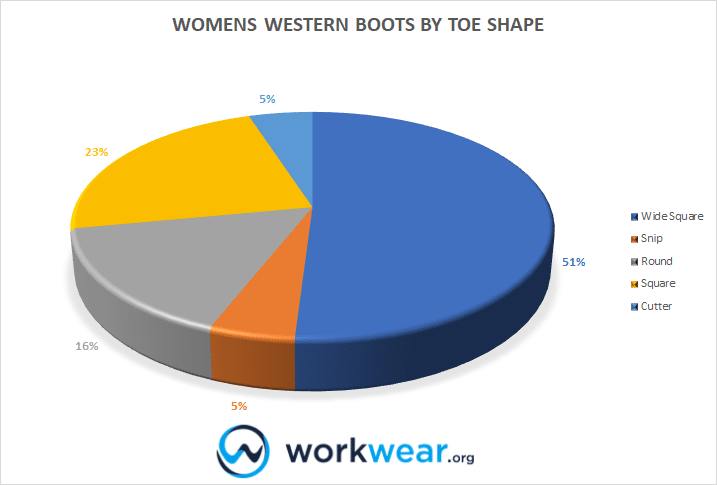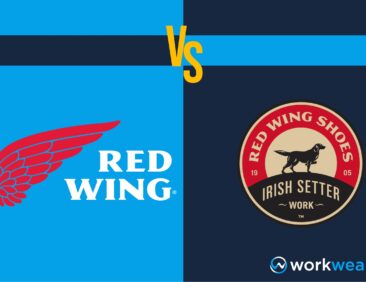Western Boots Toe Shapes – Explained & Illustrated
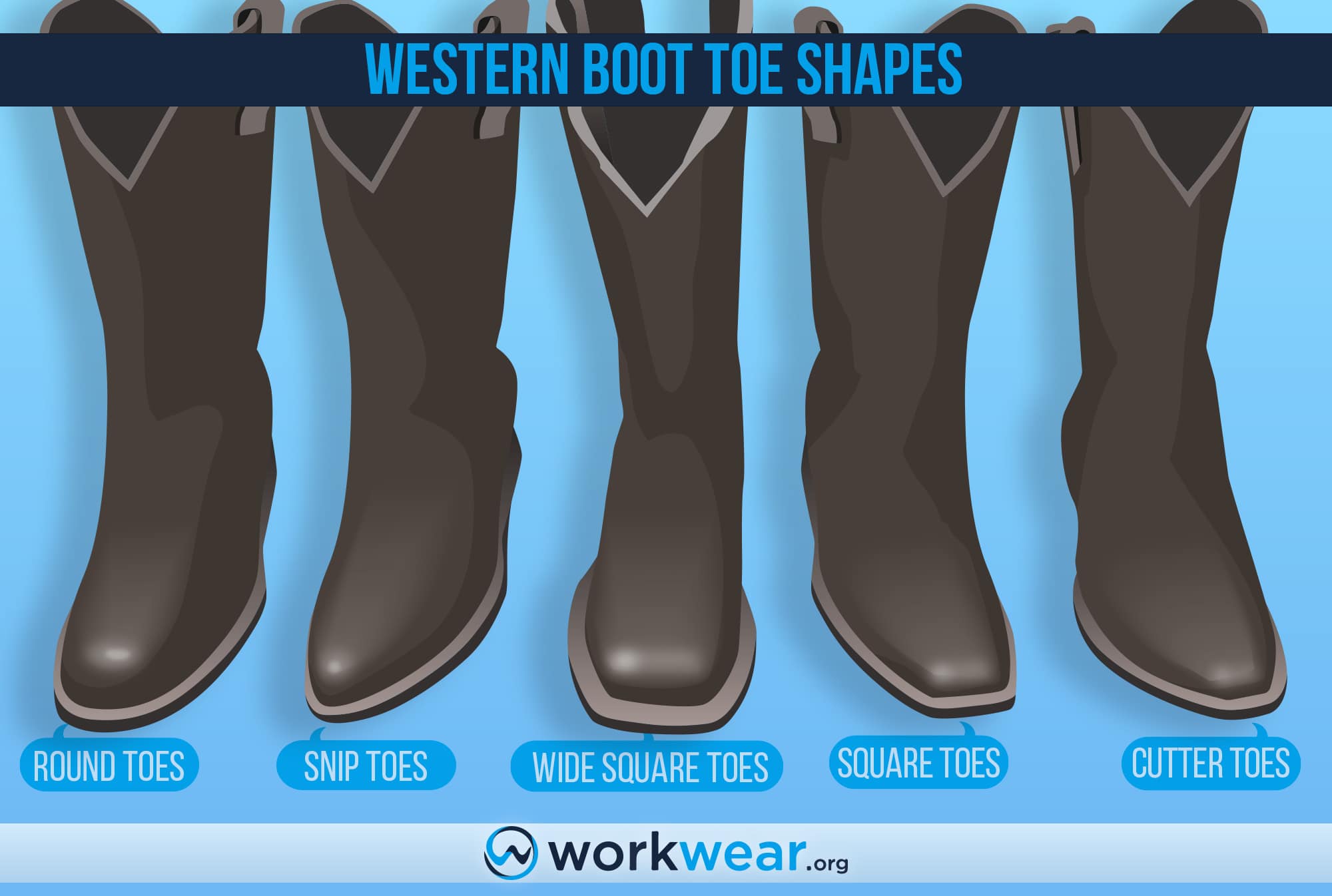
Western boots have distinctive looks that set them apart from other boot styles. There’s no doubt that these boots are some of the most stylish options you’ll come across for work boots and even for casual footwear. When you look at them individually, you’ll realize that each pair also has unique characteristics – including their toe shapes.
How the footwear tip is shaped isn’t only for Western boots’ aesthetics but also affects function and comfort.
Let’s discuss the different types of toe shapes showcased in Western boots and how each one impacts the boots’ looks and performance.
Different Western Boot Toe Shapes
Round Toe
This toe shape is the most common in classic Western boot silhouettes.
The rounded tip gives Western boots a seamless look, making them versatile enough for work environments and lifestyle use.
Depending on other design details, the round toe shape can deliver the ruggedness needed to deal with manual work, but they can also inject more style into the boots’ profile.
Since the round toe makes a boot more streamlined, it’s more appropriate for formal settings than the square toe shape.
Western boots with round toe shapes often have just the right amount of space in the toe box for comfortable toe flexing – but they don’t feel so roomy that they can cause an unstable feeling while walking.
Square Toe
The square-toe shape is associated with modern Western boots rather than traditional ones.
The tips of these boots feature right angles to form a square shape, giving the footwear a bolder silhouette.
The ruggedness of the square-toe shape makes these Western boots ideal for casual outfits (for work or leisure purposes) since they generally don’t look sleek enough to pair well with formal attire.
Square toe Western boots allow the toes to spread more naturally than those with round-toe shapes, making them more comfortable.
With ample room in the toe box, these boots are more suitable for activities and jobs involving prolonged walking or staying upright.
Wide Square Toe
As the name suggests, this toe shape is almost the same as the square toe but with a wider profile.
This results in the toe box having more room for the toes to spread naturally for longer-lasting comfort and better mobility.
Western boots with wide square toes are great for those with wide feet. Their toe boxes have bigger spaces to accommodate the toes’ comfortable wiggling and flexing throughout the day, eliminating the discomfort that comes from the toes being cramped into a tight space.
This toe shape is also ideal for those planning to put in thicker or additional insoles to enhance foot comfort and support since there’s extra space inside the boots for the inserts.
Cutter Toe
Western boots with the cutter toe shape are the narrower versions of square-toe boots.
Their tips form square shapes but don’t have the horizontal clearance that’s associated with square-toe cowboy boots.
The slimmer toe shape makes the boots easier to maneuver into and out of stirrups, making the boots ideal for riding.
It also creates a sleeker silhouette that’s suitable for use with formal attire options that may not partner well with square-toe boots.
In addition, the cutter toe shape has more space – and can be more comfortable – for the toes compared to traditional round-toe styles.
Snip Toe
The snip toe shape has a similar silhouette to a round toe, but its tip is bluntly cut or snipped off.
This results in a pointed boot profile, with the point being sharper than the round toe and square toe shapes.
Western boots with snip-toe shapes look more contemporary than traditional round-toe or square-toe styles. They can instantly make any attire look dressier, so it’s not surprising that they’re popular for those who prefer ultra-fashionable Western boots.
The narrow tips make these boots easy to slip into and out of stirrups, but these boots are more often preferred because of their trendy looks.
The graphs above show the breakdown of western boots available in the market by toe shape. There is one graph for men’s boots and another for women’s boots.
Judging by the figures we got, square and wide square-toe shapes dominate when it comes to men’s Western boots from Ariat and Justin.
Boots with these toe shapes are more versatile in performance, as they can be used for work and leisure. These Western boots are typically more comfortable to use all day and for various activities because they have more spacious toe boxes created by the square toe shape.
For women’s Western boots, most toe shapes are square.
It’s also interesting to note that slimmer toe shapes – such as the pointed shape for Justin and snip for Ariat – are offered for women’s Western boots, not men’s.
The narrower boot silhouettes are on account of the slimmer foot structures of women, delivering enhanced comfort and a more streamlined look than bulkier shapes.
Conclusion
Western boots are some of the most stylish boot options for work or lifestyle use, and one of the aspects affecting their appearance is toe shape. The boots’ toe shapes have a direct impact not only on their looks but also on their performance. Wider square options are more spacious and generally more comfortable than round-toe shapes, while round toes are typically better suited for more formal settings and are more versatile.
FAQ's
- Can Western boots with round toes be used with suits?
- The round-toe profile is better suited for more formal or strict attire than square-toe shapes. However, it’s also important to consider other design features – such as color and embroidery details -that can affect how the boots look with formal suits.
- Do Western boots come with safety toes?
- Yes, some Western boots are built with safety toe caps. These protective features are more common in square-toe styles, although some round-toe Western boots have safety toes.
- Should the toes touch the end of square-toe or round-toe Western boots?
- No. There should be about an inch of space (approximately the size of a thumb placed sideways) between the tip of the toes and the edge of the toe box. This gives the toes the extra room to slide forward and flex naturally for a more comfortable experience.
- Which toe shape is better – square or wide square?
- Both shapes are ideal for those who want their toes to stay comfortable with all-day boot use or hours of walking. The wide square may be better for those with wide feet because the shape has a bigger space for the toes to spread out more comfortably.
